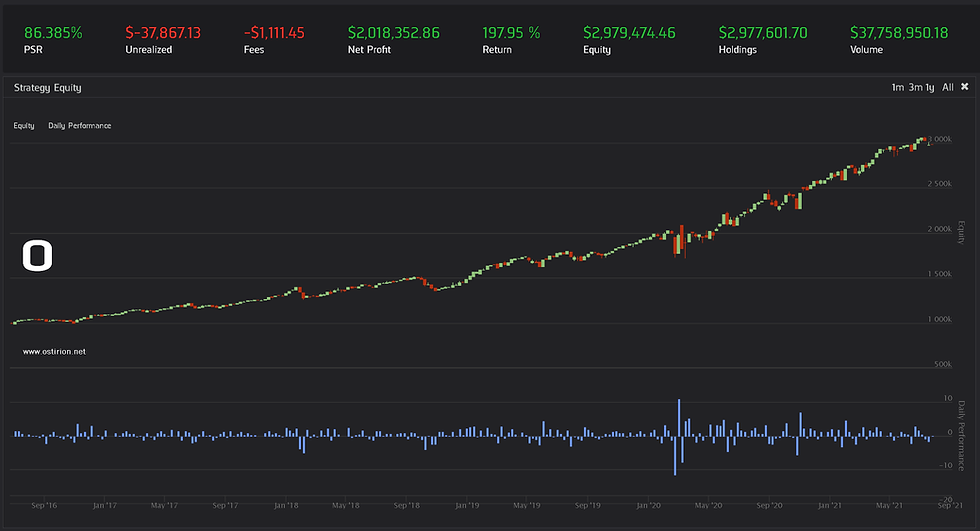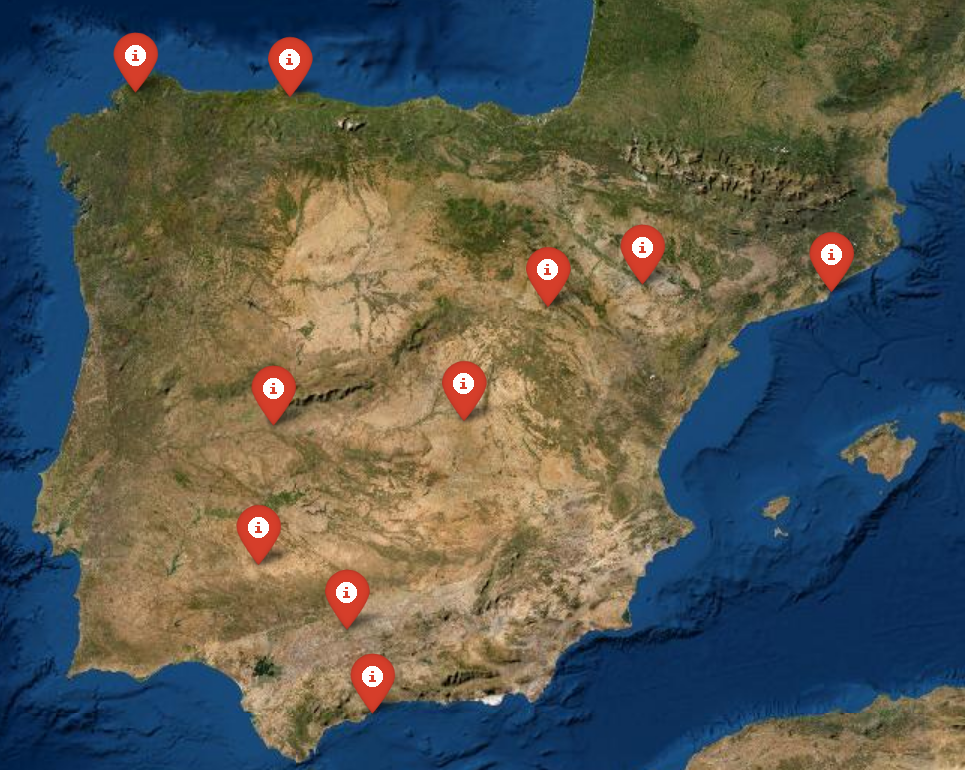Your Life (In Investment Terms)
- H-Barrio

- Sep 8, 2020
- 4 min read
Updated: Sep 18, 2020
Traditional investment advice is falling out of grace. Quantitative techniques, machine learning, artificial intelligence and a general adoption of the scientific method in asset management has discarded some investment techniques that were consuetudinary and unscientific. In this scientific, evidence-based grand jury of investment advice, virtue and sin are treated equally. Some advice that may have merit is discarded either for simplistic, improbable or under-researched.
Our expertise in Ostirion.net spans multiple, disparate areas, from aerospace engineering to philosophy, and one principle we have seen operating in all these areas is the Anna Karenina Principle: "All happy families are alike; each unhappy family is unhappy in its own way." All good asset management or trading algorithms are alike, every failing algorithm is failing in it own way. We have a full spectrum of probable causes for algorithm failure and if this algorithm comes from traditional wisdom and its only flaw is a lack of scientific evidence we can still redeem it. We can produce a "more scientific" exploration of one of the most common investment advises: Stocks and bonds to a proportion of 100 - your age (your life). This rule says that we should hold a percentage of stocks equal to 100 minus your age and the rest in high grade bonds or government debt or any other asset that can be considered "safe".
We will reproduce your life (in investment terms) using this traditional piece of advise, we will use SPY index for our stocks, risky investment and, initially, the TLT ETF as our "safe" investment. TLT attempts to track long term treasury bonds and serves as a first and quick instrument, we can always complicate the "safe" holdings later. Our robot advisor is totally fastidious and, for the sake of simplicity, insists on re-balancing our life savings daily. The code to simulate this advice using Quantconnect´s Lean engine is very simple:
class YourLife(QCAlgorithm):
def Initialize(self):
self.start = datetime(2002, 9, 1)
# Your initial age in 2002:
self.INITIAL_AGE = 35
self.SetStartDate(self.start) # Set Start Date
self.SetCash(100000) # Set Strategy Cash
self.AddEquity("SPY", Resolution.Daily)
self.AddEquity("TLT", Resolution.Daily)
self.SetBrokerageModel(BrokerageName.InteractiveBrokersBrokerage,
AccountType.Cash)
def OnData(self, data):
# Your age since simulation start, in days and years:
your_age = (self.Time - self.start).days
your_years = (your_age/365) + self.INITIAL_AGE
ratio = (100 - your_years)/100
self.SetHoldings('SPY', ratio)
self.SetHoldings('TLT', 1-ratio)
We start 2002 because TLT was created that year. We set our initial age to 35 years and we have 100,000 USD in cash, either from savings or inheritance. If we keep our daily portfolio updated following our life advice we obtain these results:

411% total return, a Sharpe ratio of 0.9 in the period and we had to live through a 35% drawdown starting January 2009 that lasts almost a year, with 5 consecutive months of net worth losses. Our robotic advisor generates less than 8K USD in brokerage fees even insisting on rebalancing to your age daily. Drawdown periods are:

What if we were older in 2002, if we were 50 (set self.INITIAL_AGE in the algorithm to 50), and had the same 100K USD dollars to invest with the traditional robot advisor:

The returns are lower, the risk is lower as our traditional advise promises. Returns drop to 375%, Sharpe ratio is 0.96 and our maximum drawdown is now 20%, with 10% yearly compounding returns. Draw-down periods are the same length but less severe so it offers a greater peace of mind.
What happens when you are the unluckiest person in the planet? When your mate in the MBA, who sits next to you, who leads the equities desk in a bank, comes into class one day in late 2007 and tells you: "You don't know what is coming". We are 28 and just opened an account with the traditionalistic robot advisor:

If the hands of the unluckiest investor in the world were made of iron, they would had seen a drawdown of 40%, our 100K became 60K sometime in 2009. Sharpe ratio for the period drops to 0.7. This will be more a matter of psychology that finance now, if the unluckiest investor was ready for this they would have lost 3 years of returns to end with a similar 10% yearly return as the rest of our investors. Pulling out at the wrong time would have been disastrous. The story of the unluckiest investor is (mostly) fictional.
Traditional advice seems to be working at a very basic level, on the long run you can achieve decent returns by using the simplest of asset diversification and risk controls. This traditional advice will get you through bad times, probably with some stress.
What if, again, we return to one of our lucky investors and add gold as GLD ETF? Of course the investor may hold physical gold instead of a gold ETF if they so desired, the robotic advisor will be very upset has it cannot re-balance to the milligram daily. The same 35 year old investor now will invest the safe portion of their portfolio in bonds and gold equally:

The results are arguably better, returns increase a little bit, draw-down is reduced and the investor takes a little bit more risk. This illustrates that the basic advice, that is fundamentally a dynamic risk control method based on the personal characteristics of the investor, can be adjusted in many possible ways to satisfy the tastes of almost everyone. Of course this method of asset management is not hedge-fund grade as it is, could serve well to individual looking for risk/reward balance and sleeping well almost every year.
In the future we will explore how to supercharge our life, increase the risk, control the drawdown and leverage this tradition backed strategy.
Remember that our publications are not financial advice. Ostirion.net does not hold any positions on any of the mentioned instruments at the time of publication. If you need further information, asset management support, automated trading strategy development or tactical strategy deployment you can contact us here.



Comments